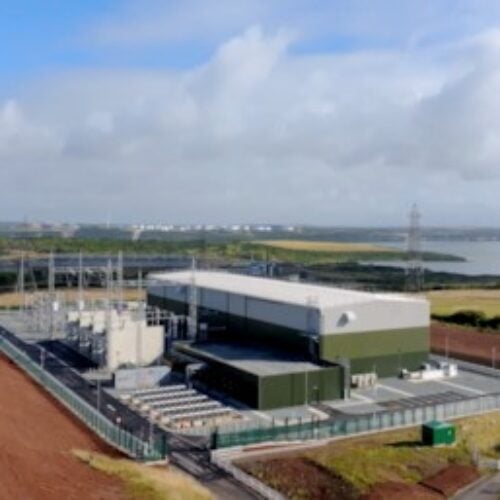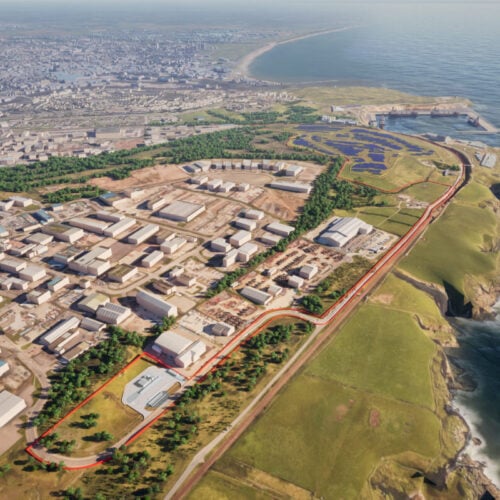This week’s issue of Current± Price Watch – powered by Enact – looks at the launch of Great British Nuclear (GBN), how grid upgrades can boost renewable capacity and a record breaking week for imbalance market prices.
Day ahead: Prices drop to £10/MWh as GBN launches to hand nuclear boost
Day ahead market prices saw a high of £130/MWh on Tuesday (18 July) and a low of £10/MWh on Sunday (23 July). The average price started the week at £72.54/MWh and finished the week at £77.87/MWh.
Nuclear energy received a boost last week with the launch of GBN, a new government trade body aiming to support and scale the GB nuclear industry. This could result in a fall in future day ahead prices with increased low-carbon energy being added to the grid.
Although conventional nuclear reactors can produce vast quantities of low-carbon energy for GB, these often are very expensive and take decades to build. Because of this, GBN will support the development and introduction of small modular reactors (SMRs), much like France. This could impact prices in the shorter term.
The UK’s nuclear renaissance is underway 🇬🇧
— Department for Energy Security and Net Zero (@energygovuk) July 18, 2023
Great British Nuclear will drive forward clean, reliable nuclear energy projects for generations to come.
Boosting energy security, supporting high-skilled jobs and growing the economy.
Find out more: https://t.co/6TJqjbXrHM pic.twitter.com/jISYebRsG7
GBN will support SMR’s, which are advanced nuclear reactors that have a power capacity of up to 300MW per unit, via a new competition designed to attract the best designs from both domestic and international vendors with the government set to select leading technologies to bring forward into demonstration stages by the end of the year.
The UK Government also emphasised the importance of SMR technology in achieving its ambition of having 24GW of nuclear energy operational by 2050.
Despite the creation of GBN being regarded as a triumph for the UK Government, many within the energy industry have questioned whether this increased investment could hinder the support for other “proven” renewable technologies such as wind and solar – both of which could reduce day ahead prices.
Touching on this topic, Jess Ralston, head of energy at the Energy and Climate Intelligence Unit (ECIU), said: “A number of experts, including the Climate Change Committee, see a role for nuclear in removing gas from our power system, but with SMRs yet to be deployed and larger plants like Hinkley over-budget and delayed, it’s difficult to predict exactly what the costs and timescales might be for future endeavours. The Office for Budget Responsibility has said the high upfront costs of nuclear could leave us with a £170 billion bill.
“Despite slight cost increases given current inflation levels, British renewables will remain much cheaper than both gas and nuclear. There are questions over whether the government has taken its eye off the ball for the current Contracts for Difference (CfD) auction round for wind farms, imposing too tight restrictions and so limiting the projects that might get built.
“Where government places its focus is important for green investment from businesses, and clearly rapidly building out renewables is the best deal for the UK tax or billpayer.”
Intraday: Grid upgrades will bring more renewables online and reduce curtailment
Having gone negative on 16 July last week, intraday prices bounced back on 17 July – the same day imbalance prices dipped to record lows. Both imbalance and intraday prices returned to negative on 23 July, with intraday falling to £-39.25/MWh.
Despite these record low prices in the summer, caused by higher renewable generation and lower demand, electricity prices may be higher than they could be when renewable generation is higher if the grid doesn’t have the capacity to take all the energy being produced. Such imbalance shocks also feed into intraday prices.
The long-term answer to this is to increase grid capacity by building new infrastructure, something that grid owners are starting to accelerate. Ofgem has given approval for a 220MW undersea transmission cable between Scotland and the Orkney Islands, which will help to provide extra grid capacity for wind and tidal projects around the islands.
Also announced this week by Ofgem was the shortlist of companies for its next Offshore Transmission Owner (OFTO) bidding round for projects worth around £2 billion. According to the regulator, it is the biggest ever offshore transmission tender round and will encompass three transmission links to the Dogger Bank A, Neart na Gaiothe and Moray offshore wind farms.
With more intermittent renewable energy in the mix, quickly changing weather forecasts can result in an unplanned shortfall or surplus of power from solar or wind power plants. As the energy markets adjust to the new normal, in which renewables make up more of the electricity supply, intraday trading is becoming increasingly important.
Imbalance: Low demand and high generation enables ‘lowest GB system price ever’
Imbalance prices started the week at £-185.33/MWh on 17 July before sharply increasing to a high of £239.46/MWh just the day after (18 July). Prices then finished the week with a high of £135/MWh and a low of £30.01/MWh.
Monday (17 July) saw what was the “lowest GB system price ever” which stood at £-185.33/MWh. According to a post on LinkedIn by LCP Delta, this was primarily due to high solar generation, over-performing wind generation, low demand and increased imports from continental Europe.
According to Shivam Malhorta, consultant at LCP Delta, ScottishPower and Macquarie Group’s East Anglia One offshore-wind asset helped contribute to the new record which occurred at 14:00-15:00 GMT.
East Anglia One, a £2.5 billion project located 43 km off the coast of Suffolk, features 102 Siemens Gamesa offshore wind turbines and has the capacity to produce 714MW of clean energy.
Malhorta also highlighted that alongside East Anglia One, other assets across the energy mix also priced £0 or below. This included wind, biomass, supply-side and pumped storage assets.
To find out more about LCP Delta’s Enact platform, click here or follow them on Twitter or LinkedIn for the latest market updates.






